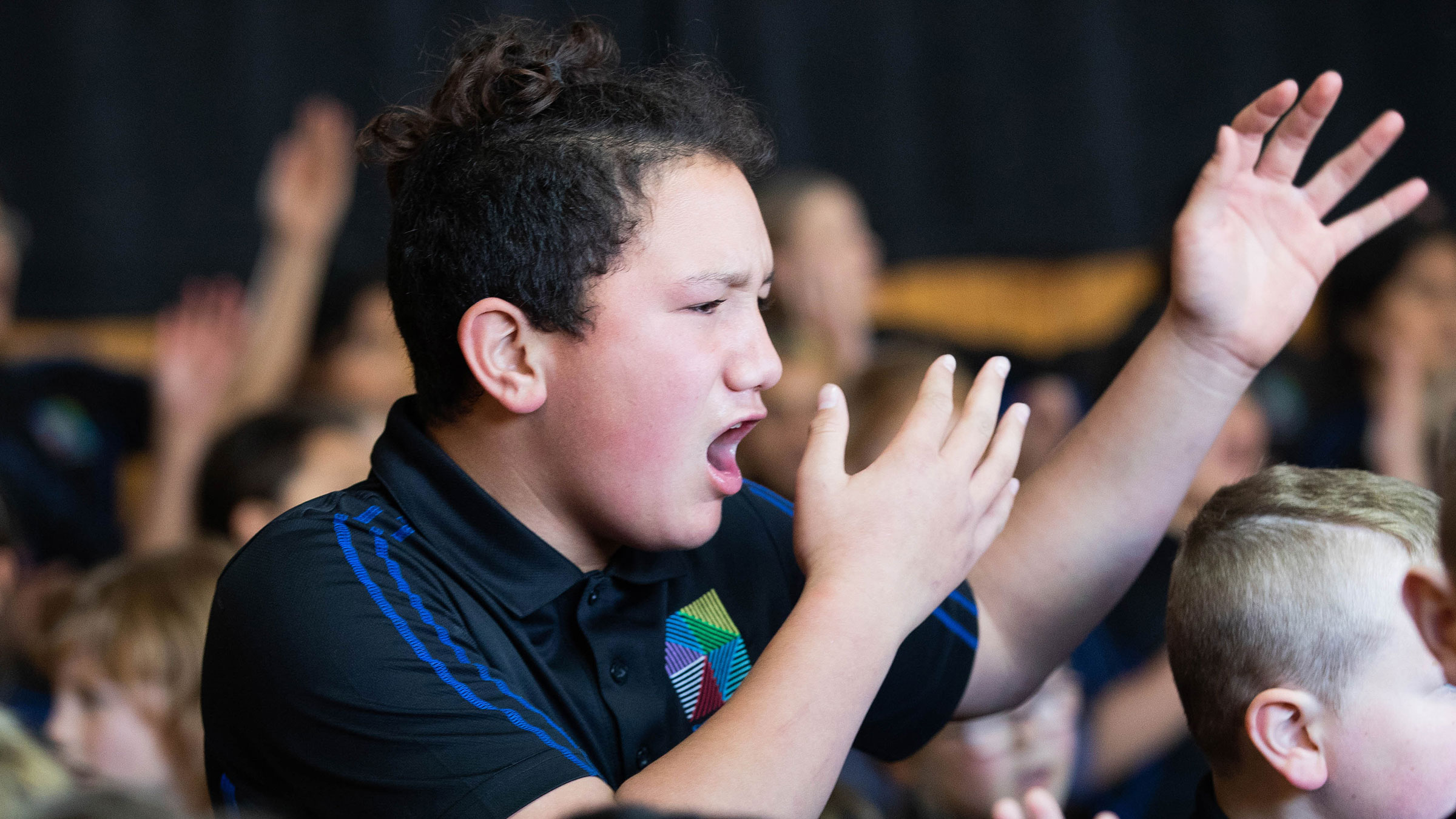He whakaaturanga haka Haka performance
He whakaaturanga haka! Perform a haka!
Exploring te ao kori — Activity collections
This resource is part of a series within the Exploring te ao kori activity collections called Te reo kori me te nekehanga | Voice and movement.

Intended outcomes
Ākonga:
- demonstrate an understanding of the tikanga and spirit wairua involved in performing haka
- develop complex movement sequences in haka
- participate in a haka performance and describe how addressing the issue portrayed in the performance could enhance their own wellbeing and that of the school community
- use haka vocabulary and choreographic devices to create a haka that communicates a social issue
- perform (move and chant) rhythmically and expressively.
Suggested approach
Review haka history and protocols whakapapa tikanga, and movement vocabulary in a warm-up (see activity Te tito i tētahi haka | Composing a haka).
Ākonga can identify the qualities of the movement in haka by viewing and discussing performances on online videos of kapa haka performances. Take care to notice where online videos have come from to ensure the relevance and authenticity of the content. There are online video clips of the Aotearoa Traditional Māori Performing Arts Festival, and this is a good place to start your search.
In groups, ākonga choose a social issue relevant to their school, for example, bullying, peer pressure, being Smokefree, fair play, and choose four to five haka movements from those they have seen and/or those they have composed to use in a sequence depicting the issue.
The sequence can incorporate use of the following choreographic devices – repetition, canon, augmentation, embellishment, as well as te reo, the underlying beat, and/or accents to capture the essence of their message.
Ākonga record their haka on paper (using words and graphic notation) and on video for self/peer evaluation/assessment.
Ākonga perform these sequences in a syndicate or school assembly and use it as a forum to explain why this is an issue for the school and what some possible solutions might be, and describe how addressing their issue will enhance the wellbeing of the school community.

